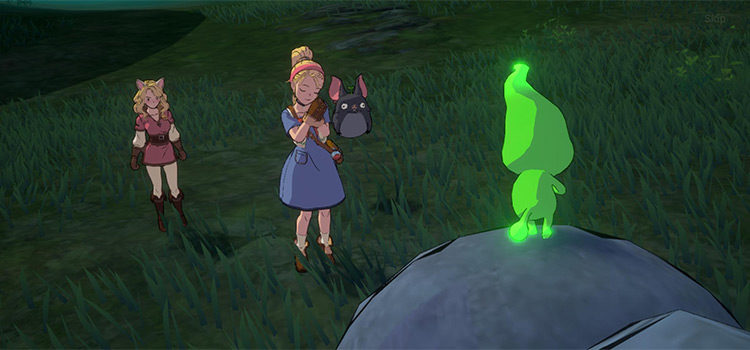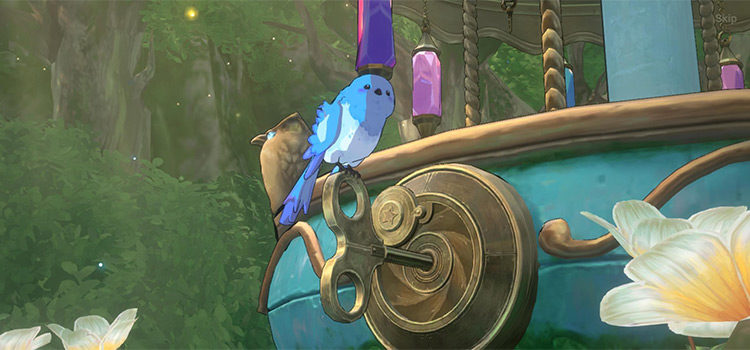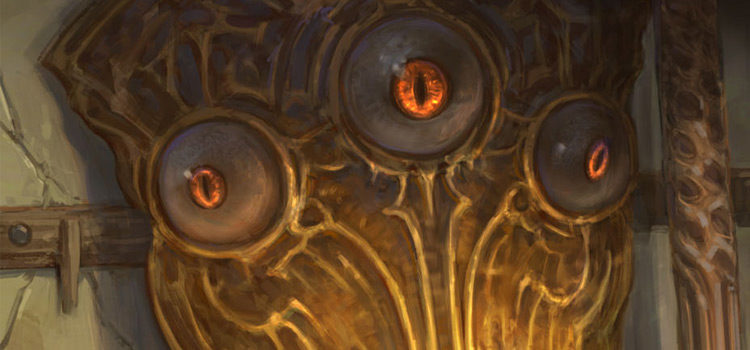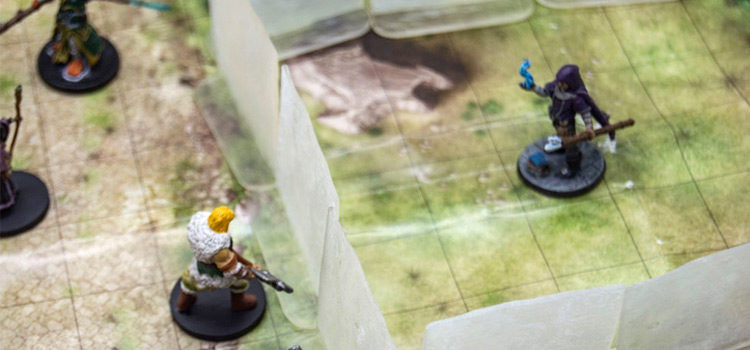Find Familiar: D&D 5e Spell Guide
This post may contain affiliate links. If you buy something we may get a small commission at no extra cost to you. (Learn more).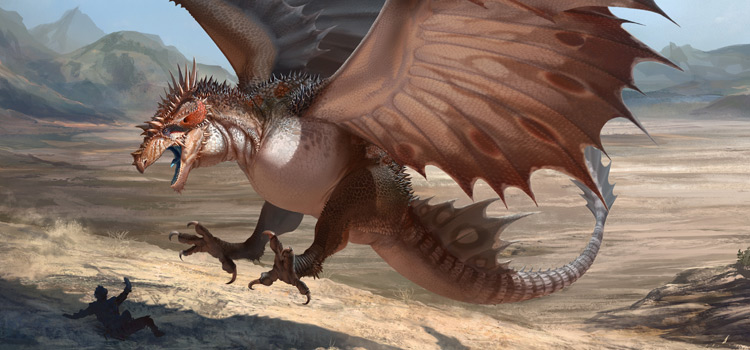
People like pets.
Magical pets are even better. Especially when they provide a lot of utility functions within a game. So let’s learn about Find Familiar in 5e to see how magical our pets could get.
Find Familiar Spell Details
Type: 1st Level Conjuration Spell
Casting Time: 1 Hour (Ritual)
Range/Area: 10 Feet
Components: V, S, M (10 gp worth of charcoal, incense, and herbs that you burn in a brazier)
Duration: Instantaneous
The spell allows you to summon a fey, fiend, or celestial spirit in one of the following animal forms: bat, cat, crab, frog (toad), hawk, lizard, octopus, owl, poisonous snake, fish (quipper), rat, raven, sea horse, spider, or weasel.
The spell has a number of features, primarily dealing with how you and your familiar interact in and out of combat:
- The familiar follows your commands, but it rolls its own initiative and acts on its own turn.
- Familiars can’t attack (normally), but they can take other actions as normal
- If a familiar’s hp is decreased to 0, it disappears. You can cast the spell again to re-summon it.
- You can talk to your familiar telepathically, so long as it is within 100 feet of you.
- You can use your action to see and hear through your familiar.
- You can temporarily send your familiar to a pocket dimension, or dismiss it permanently if you want to.
- While it’s in your pocket dimension, you can make it reappear within 30 feet of you.
- You can only have 1 familiar (again, normally), but you can cast the spell again to summon your familiar in a different form.
- You can cast a spell like shocking grasp with a range of touch through your familiar. The familiar has to be within 100 feet, and it uses its reaction to deliver the touch spell instead of you.
Who Gets This Spell?
The wizard. Since the spell is on the wizard spell list, Eldritch Knight fighters and Arcane Trickster rogues have access to it as well.
And it’s a good enough spell they may end up taking it.
Sorcerers used to get familiars back in 3.5 … but it’s no longer available to them. Another knife in the back of the poor sorcerer.
Bards can get it through Magical Secrets, but they can choose from so many spells it’s not really worth mentioning.
Warlocks can learn it by taking the Pact of the Tome and learning find familiar as a ritual. Or they can take the Pact of the Chain and get it for free, along with more powerful familiar options.
Familiars are particularly important for Pact of the Chain warlocks. They get more powerful familiar options, and a couple of their invocations interact with their familiars.
The Arcana Domain cleric can cast it through their Arcane Mastery feature, but only by taking the wish spell. It’s unlikely that you’re going to wait until level 17 to use a 9th level spell slot to summon a magic cat.
If you don’t get it through your class, you’re not out of luck. Anyone can learn find familiar by taking the Ritual Caster feat (make sure to pick the wizard spell list) or the Magic Initiate feat.
If your party ever has a ring of spell storing lying around, you can put find familiar into the ring and pass it around.
Setting-Specific Options: Theros
If you’re playing in Theros, your character gets something called a Supernatural Gift.
It’s a cool feature, and there are some interesting options in there.
One option is contained in a sidebar titled “Heroic Feats.” With your DM’s permission, you can take a feat at 1st level instead of a supernatural gift.
That gives you the option of starting play with Magic Initiate or Ritual Caster, and using either feat to learn find familiar.
Setting-Specific Options: Wildemount
People playing in the Wildemount setting can (potentially) use the Heroic Chronicle system to get the spell.
The Heroic Chronicle is somewhat complicated and depends on your DM using that system.
You also have to roll a particular result on a d20 from the randomized Fateful Moments table, or have a DM that lets you pick a particular option.
If you do have access to the Heroic Chronicle, you can get the find familiar spell in two ways:
- Roll a 7 on the d20 – you get the Magic Initiate feat. It gives you two cantrips and a 1st level spell—which can be find familiar.
- Roll a 12 – you get to see a demon lord in your dreams, and you learn how to ritual cast find familiar. It can only summon a quasit, and you suffer from a random form of indefinite madness.
For those playing in the Forgotten Realms, James Haeck made a version of the Heroic Chronicle for the Sword Coast that you can find on DnD Beyond. This one also includes a familiar option, although it can only be used to summon an imp and still comes with indefinite madness.
The Heroic Chronicle system is actually quite nice, and can help players new to D&D flesh out their characters.
Getting a familiar through it randomly is pretty unlikely, however.
And one of those two has some drawbacks.
Why Learn Find Familiar?
Familiars have a lot of uses.
Ones that blend into their surroundings and have bonuses to stealth make good scouts.
While familiars can’t attack (unless you’re a Pact of the Chain warlock), they can take the Help action, giving you or an ally advantage on an attack.
That’s especially good for the Arcane Trickster rogue. Advantage means Sneak Attack, and every rogue loves more Sneak Attack.
Since they will follow and understand commands, you can tell them to do simple things like deliver letters or interact with the world in ways you can’t.
If you’re stuck behind bars, but you can see the keys hanging off the wall, you could summon your familiar outside the bars and have it bring you the keys. Or push on a lever.
The uses for your familiar are limited only by your creativity, and the ability to deliver touch spells through them is a great benefit too.
Different Types of Familiars
Familiars manage to be both simple and complicated. If you just look at the find familiar spell, it’s pretty straightforward.
Even with the special rules for Pact of the Chain warlocks, it’s not too complicated.
Unfortunately, it doesn’t stop there. The following types of ‘familiars’ exist.
- Standard familiars from find familiar
- ‘Ask your DM’ familiars
- Pact of the Chain familiar options
- Variant familiars that serve NPCs
- Special or unique familiars
Asking Your DM
There are a couple of creatures that have been added to the game that can be selected as familiars. You just need your DM’s permission first.
This is, at least, very simple.
All these options come with a line in their statblock that says it can be summoned with the find familiar spell, if the DM is okay with it.
This includes the tressym from Storm King’s Thunder, the almiraj and flying monkey from Tomb of Annihilation, and the abyssal chicken from Baldur’s Gate: Descent into Avernus.
The abyssal chicken is more-or-less ‘unlocked’ by visiting a particular region in Avernus.
That said, if you’re playing a different campaign or a different setting, you could always ask your DM if it’s alright to summon one.
Pact of the Chain Familiars
Warlocks who pick the Pact of the Chain get access to more powerful familiars.
In addition to the regular options, you can also pick the imp, pseudodragon, quasit, or sprite.
The Pact of the Chain provides additional benefits to these familiars as well. These warlocks can choose specific invocations to boost their familiars’ abilities.
What About The Variant Versions?
Imps, pseudodragons, and quasits all have a familiar variant in the Monster Manual. These variants share their magic resistance trait with their summoners.
It makes sense to wonder if those variant features apply to a player summoning one of these familiars.
You’re a Pact of the Chain warlock summoning a pseudodragon as a familiar, so it should come with the Familiar trait, right?
Sadly, no.
Familiars work differently for NPCs than they do PCs. Short version, there’s the imp you can summon, the imp you can fight, and the imp you can fight that someone else summoned.
The mage statblock in the Monster Manual has a Familiars variant trait, explicitly mentioning that spellcasters like the mage or archmage can cast find familiar should they choose to.
For them, the list of potential NPC familiars expands to include a crawling claw, imp, pseudodragon, or quasit. Volo’s Guide to Monsters adds the beholder-like gazer and the cranium rat to that list.
That’s still relatively straightforward.
But the gazer, imp, pseudodragon, and the quasit have familiar variants a DM can use when these creatures serve as NPC’s familiars.
These variants also share their senses with their summoner up to a range of 1 mile, rather than 100 feet.
They can also choose to leave their mage’s service. Pseudodragons can leave whenever they want, while other creatures only leave if treated poorly, or if the terms of a pact are broken.
Special and Unique Familiars
So, do you remember all the rules so far? Familiars are celestials, fey, or fiends? You’re limited to certain creatures?
Forget all of that. Here come the exceptions.
Warning: this section contains spoilers for a number of official adventures.
Curse of Strahd: As part of Barovia’s spookiness, your DM can make familiars summoned in Ravenloft become undead spirits rather than celestial, fey, or fiend.
This is at the DM’s discretion. If they want, they can choose to use the Cosmetic Spell Alteration rules to make Barovia feel different.
Baldur’s Gate: Descent into Avernus: As part of Avernus’ spookiness, your DM can make familiars summoned in the hells simply arrive as imps.
Doesn’t matter if you’re a Pact of the Chain warlock or not. Everyone gets an imp.
Again, this is at the DM’s discretion.
Explorer’s Guide to Wildemount: On top of the Heroic Chronicle, Wildemount includes a high elf mage with a faerie dragon familiar
Which means one more NPC-only familiar to add to the list.
Mythic Odysseys of Theros: Odysseys includes a new NPC-only familiar as well: the anvilwrought raptor.
Guildmaster’s Guide to Ravnica: Players who are members of the Simic Combine who achieve the rank of Technician gain the ability to modify pets, familiars, mounts, or animal companions. This allows them to add one random adaptation to it.
Waterdeep: Dragon Heist: Dragon Heist sort of features a new mechanic that allows a player to take a creature they meet in the world as a familiar.
Inside Xanathar’s lair, you can find an albino gazer. According to the adventure text, you can befriend the familiar with a pretty easy Persuasion check.
After that, all you need to do is cast find familiar and you can take the gazer as a familiar.
The gazer’s alignment changes to match yours, which is nice. This is also the only totally official, right-out-of-the-book way to get a gazer as a familiar.
Ghosts of Saltmarsh: Ghosts has the same mechanic from Dragon Heist, but with slightly more depth added to it.
During the adventure Tammeraut’s Fate, you can come across Virgil, an intelligent gull that once served as a wizard’s familiar.
If the PCs help Vergil during the adventure and earn his trust, they can make an Arcana check to try to figure out how to bind a familiar with a new master.
The DC for the check decreases depending on how much time is spent researching the topic. On a success, they can cast find familiar to turn Virgil into their familiar, although it costs 20gp worth of incense and charcoal instead of the usual 10gp.
Disappointingly, this mechanic is not used more widely throughout the book. An earlier adventure gives the players an opportunity to bond with a pseudodragon named Bimz.
The adventure explicitly says Bimz chooses a character and bonds with them, but no mention is made of turning him into a familiar.
Between Saltmarsh and Dragon Heist, you could come up with a system for turning existing creatures into familiars.
Unfortunately, Wizards of the Coast hasn’t done that already. Although these two adventures do give us the start of that type of system.
Infernal Machine Rebuild: The Infernal Machine of Lum the Mad does some weird stuff. At the end of a long rest, 1d4+1 random beneficial things and 1d4+1 random detrimental things happen to anyone attuned to the Machine.
One of these happens to summon an exact duplicate of you … that functions as a familiar. It has the cat statistics.
The duplicate/familiar only lasts until the end of your next long rest. Until then, you functionally have two familiars—your regular familiar and your duplicate.
Lost Laboratory of Kwalish: This adventure includes a new spell for anyone who likes familiars. Flock of Familiars is a 2nd level Warlock and Wizard spell.
When cast, you summon up to a total of three familiars, including any familiar you already have summoned.
These familiars function mostly like normal familiars, although the range of their telepathy and shared senses is 1 mile.
Familiar Options
To be perfectly honest, you can have any kind of familiar your DM will let you have.
If a DM wants to let a Great Old One warlock summon a gazer, they are absolutely able to do so.
One of my players has an animated yarn doll that she uses as her familiar.
However, there are a few explicit choices for the spell, so that will be what I stick to here.
I won’t list off all their stats. But I will go through a couple points about what makes some options useful.
I also won’t rate each one. But I will mark ones I recommend as the most effective familiars for their type.
Standard Familiars Options
Bat
On top of having a fly speed, bats have blindsight.
Their echolocation allows them to see in darkness and magical darkness. It also lets them notice invisible creatures.
This can be very helpful if you frequently fight enemies that make use of magical darkness, or plan to use the darkness spell yourself.
Entertainingly, since the bat’s blindsight comes from echolocation and the bat has Keen Hearing, you could make the argument that almost any perception check the bat makes to find something is with its ears. At least within 60 feet.
If blindsight would be a benefit to your party, bats are an excellent choice. If you just want a flying creature, I’d recommend the owl.
Cat
A classic magical animal, cats are common familiars as well as common pets. Their bonus to stealth and keen smell is nice, as is the fact that cats are more well-liked than some of the other options.
A bat, spider, or snake are more likely to be chased off than a cat. Cats are very common in many areas, and their widespread nature means they work well as a second pair of eyes or to infiltrate areas where they won’t be noticed.
There’s some discussion about whether the cat should have had darkvision and keen hearing on top of keen smell.
Personally, it seems silly to me that cats don’t have darkvision when other animals with similar real-world abilities do.
I give cats darkvision when I DM. But that’s a house rule not every DM will do.
Crab
To their credit, crabs are quite useful.
They aren’t fast. But they do have a swim speed, and come with blindsight, a bonus to stealth, and the ability to breathe on both land and water.
If you spend a lot of time swapping between being on land and underwater, the crab is a pretty decent choice.
Frog/Toad
Toads are another classic familiar and they’re … fine. Like the crab, they can breathe both on land and in the water. A good thing if you’re running a water-heavy campaign.
Unlike the crab, they get darkvision instead of blindsight. They are slightly better at stealth and slightly better at perception. Their standing leap might come in handy, occasionally, which might redeem them in your eyes.
Hawk
Hawks get a 60 foot fly speed and advantage on Wisdom (Perception) checks that rely on sight. They’re fine.
Lizard
Lizards are slow and have few abilities. They do get a climb speed and darkvision, but they don’t have any features that make them particularly good.
Octopus (recommended)
My recommended familiar for underwater campaigns. Octopi can’t breathe out of the water, so they thrive in games where you’ll spend a lot of time beneath the waves.
They can hold their breath for 30 minutes, which is nice.
They also get advantage on checks to hide while underwater, darkvision out to 30 feet, a bonus to perception and stealth, and (obviously) a swim speed.
On top of that, they get an additional ability. While familiars can’t attack (unless you’re a Pact of the Chain warlock), octopi do get an Ink Cloud action that lets them release a 5 foot radius of ink once per short or long rest.
Since the Ink Cloud isn’t an attack, your octopus familiar can use it to give you some cover or to make a quick getaway itself.
Owl (recommended)
If you want a bird familiar, I strongly suggest the owl over the hawk or the raven. Both have a flying speed of 60 feet, but the owl gets advantage on perception checks involving hearing as well as sight, darkvision out to 120 feet, a stealth bonus, and the Flyby ability.
If you’re using your familiar to get you advantage with the Help action, you’ll want that Flyby ability to keep your familiar away from melee fighters.
Hawks are very slightly better at perception. However, both have advantage on eye-based perception checks, so the one point difference doesn’t really amount to much.
Poisonous snake
Snakes are okay. They get 30 feet of movement and an equal swim speed. They also get blindsight, but only out to ten feet.
If you value blindsight, I’d recommend the bat, and if you’re dealing with watery environments, the crab or the octopus is more likely to be a solid choice.
Fish
The fish uses the quipper stats, but its status as a familiar makes some of its abilities pointless. Blood Frenzy is useless, since most familiars can’t attack anyway.
It’s fine underwater with 60 foot darkvision and a 40 foot swim speed. It’s slightly faster than the octopus, but without any skill bonuses or usable abilities.
Rat
Another classic familiar. Sadly, rats only get Keen Smell and only 30 feet of darkvision.
Raven
The raven is spooky, but not very helpful. Its perception is fine and it has a decent fly speed. It isn’t as fast as the hawk or the owl, however.
Worse, its ability Mimicry has a set DC of 10. It’s not very likely to be able to trick someone if you need it to.
Sea Horse
At the very least it’s a unique option. With a swim speed of 20 feet and only being able to breathe underwater, it has nothing going for it.
If it fits the aesthetic you want, go for it. The sea horse is just a tough pick when the fish is faster and the octopus has more utility.
Spider
Spiders are a perfectly useful choice for familiars. They’re a little slow, but they get a climb speed, 30 feet of darkvision, and a stealth bonus.
Paired with their spider climb ability, spiders are some of the best choices for sneaking into places and spying on the occupants.
Web Sense and Web Walker are fine, but they would be better if the spider had a mechanical ability to make webs.
If your DM doesn’t care, however, you can use this as a makeshift alarm spell, having your familiar leave strands of its web around a room.
Weasel
A solid choice. Weasels get Keen Hearing and Smell on top of a decent bonus to perception and stealth.
Pact Of The Chain Options
These options are sadly limited. Over the years, we’ve gotten more and more warlock pacts, but no more familiars to match them.
While you could play a Celestial Pact warlock and summon a celestial spirit as an imp, it does feel a bit off.
If your DM lets you reskin the imp as some kind of minor angel, that’s great.
But it’d be nice to have an actual familiar associated with some of the newer pacts.
Imp (recommended)
The king of Chain Pact familiars. The imp comes with so many toys for a warlock to use.
The imp gets bonuses to a number of useful skills, resistance to cold and nonmagical attacks (that aren’t silvered) and immunity to fire and poison on top of magic resistance.
Its darkvision works through magical darkness. It can turn invisible, and when you need it to be visible, it can turn into a raven to not scare the locals. It can also turn into a rat or spider, and few things are harder to spot than an invisible tiny spider.
Depending on your DM, there may be a downside to having an imp. If you have a fiend as your patron, you’re already dealing with potentially soul-blackening forces. It’s unlikely your imp isn’t a part of that.
If you’re fine with potentially having a tiny devil whispering evil thoughts into your ear, no worries. The imp’s abilities more than make up for it.
Plus if your DM lets you reskin the imp into something less diabolic, you might not need to deal with that at all.
Quasit
The quasit is almost as good as an imp. It isn’t immune to fire, although it gets resistance to fire and lightning as a trade-off. It doesn’t have a fly speed, but it can shapechange into a bat which also gives it blindsight to counter the imp’s Devil’s Sight.
One benefit the quasit does have is Scare. Once per day, it can try to frighten a creature. The DC isn’t very high, however, so it stops being useful when you face stronger enemies.
It also has less skills. Not that that is the end of the world, but sometimes it’s nice to have a familiar with some kind of bonus to insight and deception.
The quasit is good, if not quite as good as the imp, and is great for anyone who wants to lean more towards the demonic side of the lower planes.
Sprite
The sprite is the obvious choice for the Archfey patron, unless you want to pick a pseudodragon and flavor it as a faerie dragon.
Unfortunately the sprite isn’t particularly sturdy. Without magic resistance, any damage resistances or immunities, and low hit points, the sprite will go down fast if it gets hit.
It does still have a useful attack in its shortbow, especially against weak creatures that might fail the Constitution save.
It can turn invisible and comes with a high stealth modifier, which is excellent if you want to use the sprite on stealth missions. It doesn’t have darkvision, but its Heart Sight ability does target Charisma, which most monsters aren’t proficient in when it comes to saving throws.
Ultimately, the sprite is fine. It’s much more fragile than the imp or quasit, but it can still be extremely helpful in the right circumstances.
Pseudodragon
I love dragons, so I wish I could say the pseudodragon is the best pick here. Unfortunately, that’s not the case.
While it does have magic resistance, the pseudodragon doesn’t have much in the way of defenses.
Without any damage resistances or immunities on top of low hit points, it’ll go down fast if it ever gets in the way of an enemy.
The blindsight is nice, but the quasit’s bat form gets 50 feet more blindsight. It can’t speak like the other 3 options, instead getting Limited Telepathy.
Granted, I’ve run games where Limited Telepathy got a lot of play, but it’s not enough to make the pseudodragon ideal.
On top of that, unlike the others, it doesn’t have any kind of Invisibility. It has an unconsciousness-causing attack, like the sprite, but has to do it in melee and without invisibility granting it advantage.
Keen Senses is nice, and in the right circumstances, you can use a pseudodragon very well. On the upside, it probably won’t try to steal your soul.
Other Options (DM’s Permission Required)
Tressym (recommended)
Since nothing can ever be simple with familiars, it was reprinted in Descent into Avernus. This tressym is a monstrosity, while the one in Sword King’s Thunder is a beast.
As a familiar, it doesn’t really matter, since its creature type will be changed to celestial, fey, or fiend anyway.
Apart from the weirdness around its creature type, the tressym is spectacular. First off, it’s a cat. Not only is it a cat, it’s a cat with wings.
In all seriousness, it really is the most recommended familiar for anyone who can’t get ahold of an imp. Between its ability to see invisible things and detect poison, its fly speed, immunity to poison, darkvision, and proficiencies in perception and stealth, it has almost everything you’d want in a familiar.
I can see picking an owl over a tressym, mainly because the high fly speed and Flyby ability is tempting, but the tressym meets it at the top of the familiar ladder.
The one downside is you do have to get DM permission to summon it as a familiar. Some DMs will be fine with it. Some won’t.
Almiraj
The almiraj is fine. It’s fast, which is something, and darkvision and keen senses doesn’t hurt. As familiar choices go, it’s no owl, but it’s better than some other options.
Technically you need DM permission. But I can’t think of any reason not to allow an almiraj.
Especially if you really just want a rabbit familiar.
Flying Monkey
The flying money is unique. Part of that is it’s small, rather than tiny.
Ultimately, that means its carrying capacity is higher, and its Strength score of 8 lets it carry 120 pounds. That’s more than enough to lift most halflings or gnomes, and even some elves. It just may not be enough to carry their equipment as well.
Combined with their fly speed of 30 feet, this means a relatively lightly equipped halfling or gnome could have their familiar carry them and give them an impromptu flying speed, if not a very fast one.
More importantly, it’s a monkey. It has hands and the ability to manipulate objects closer to the way a human would. That adds a lot of utility when using the find familiar spell to peer through your familiar’s eyes.
Again, you need DM permission, but unlike the almiraj, it’s decent enough to warrant it.
Abyssal Chicken
The abyssal chicken can fly … but its Bad Flier trait means it can’t stay aloft.
It has blindsight … but it can’t see anything beyond its blindsight, making it a little less helpful when using the familiar to scout.
It is resistant to cold, fire, and lightning, on top of being immune to poison. Which is a nice benefit.
To be honest, I think if someone wants an abyssal chicken familiar, it’s because it’s an odd, vicious-looking, abyssal chicken. Which is totally fine.
You’ll need DM permission, as usual.
The adventure it comes from only grants the ability to summon it after seeing an abyssal chicken ‘in the wild.’ If you’re lucky, maybe your DM will let you research them in order to learn how to summon them.
Special Options
I’m not going to detail the crawling claw, or the cranium rat, or the anvilwrought raptor.
For the most part, they’re intended to be used as NPC familiars.
There is one you can ‘officially’ get, so let’s take a look at that.
Gazer
The gazer is interesting. It gets the same Mimicry feature that the raven has, on top of an ability that lets it move again as a bonus action so long as it’s charging an enemy.
It has a saving throw, which is nice. Darkvision helps. Its skills are okay.
Where it shines is its eye rays.
You see, the eye rays aren’t technically ‘attacks’.
That means that even without a Pact of the Chain, you can effectively have your little gazer go after your enemies.
The eye rays are random, and three of the four rays target relatively common saving throws. It’s still something, and extra saves being forced upon an opponent doesn’t hurt.
If you’re really lucky, the gazer might end up burning through a Legendary Resistance or two.
Depending on the DM, they might let you use the gazer’s telekinetic ray on an object at-will, since that is how the gazer would interact with the world outside of combat.
Without invisibility or any kind of damage resistance, it’s still not as good as the imp or quasit.
But if you make it through Dragon Heist and have a chance to pick up one of these little guys, you might as well.
Extra Life and Adventurer’s League Familiars
Every year, a lot of folks raise money for the charity Extra Life. This includes a number of the people who run D&D’s official organized play group (Adventurer’s League).
Some of them hand out special certificates for Adventurer’s League games when you make an Extra Life donation. A couple of the certificates give you new and unique options for your in-game familiars.
Other options are given out to DMs as rewards for running Adventurer’s League games.
Sometimes you can find more familiars and pets at specific conventions as part of AL events.
These kinds of unique familiars include: hellcats, winged corgis, blink dogs, walruses, a glitter elemental (dust mephit stats), pocket owlbears, thessal tressyms, unnamed geese, sea otters (modified cat stats), various goats, a miniature froghemoth, unique types of imps, infernal pseudodragons, and more.
Some of these also work as mounts or animal companions for those who don’t have find familiar.
You won’t ever be able to find all of these, or even most of them. The Extra Life ones in particular often vanish when individual members of the D&D donation team close their pages.
Familiars and pets provided as DM rewards can sometimes be found by looking through AL documentation.
These familiars are really only usable if you earn these rewards and happen to be playing in Adventurer’s League games.
If you’re playing an AL game and you get the chance to donate to a children’s hospital and get a winged corgi familiar or an unnamed goose, awesome.
For people not playing in AL, these can at least serve as inspiration for ways to reskin or alter existing familiars.
The hellcat, if I remember correctly, used a modified imp statblock.
If you already have access to an imp familiar, there’s a decent chance your DM might let you simply reflavor that as a kitty from hell.

